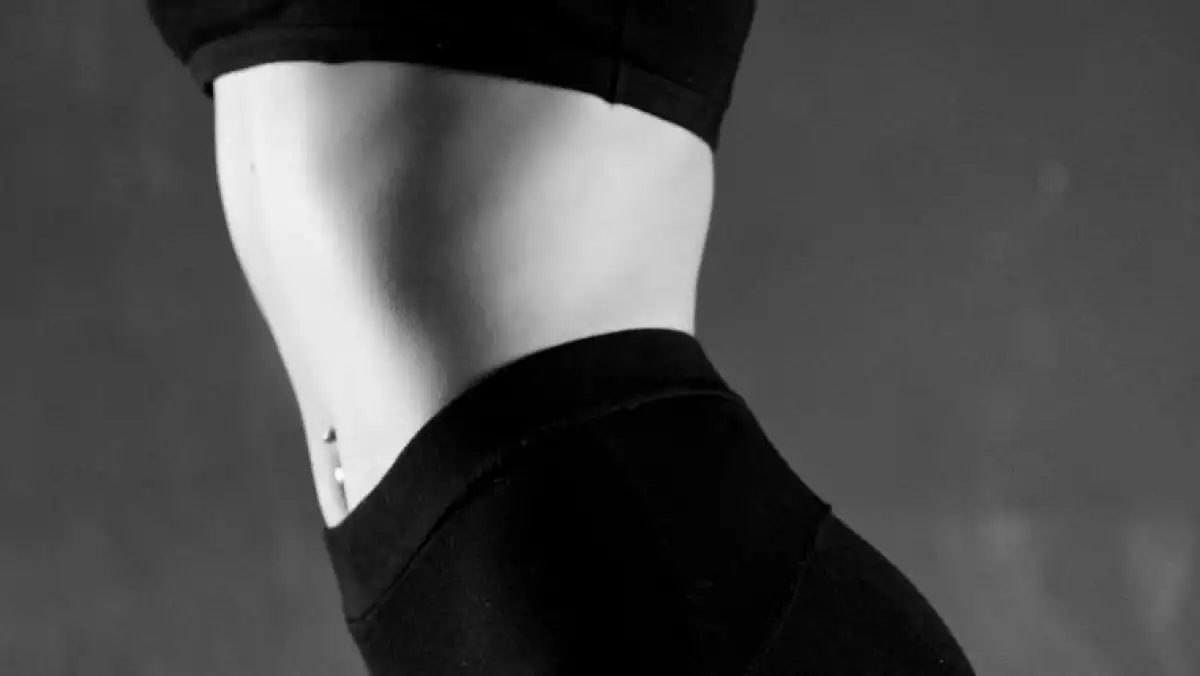
A good routine of stomach vacuum exercises, also called hypopressive exercises or low-pressure fitness, can help slim down your waistline and abdominal area and it can be easily achieved at home. Abdominal hypopressive gymnastics (AHG) offers many health benefits, especially for women.
We will have a look at the definition of stomach vacuum abdominal exercises, how they are different from other abs workouts, and we will also suggest a home exercise routine. We will also examine the health benefits of this type of gymnastics and its effects on our waistline and abdominal muscles.
What are stomach vacuum abdominal exercises?
Stomach vacuum exercises are classified as gymnastics exercises, extremely popular around the world, that focus on a mixture of poses and movements that imply toning the deep abdominal muscles, the transverse abdominis (TVA), and the perineum. In simple terms, it helps us have a slim waist and defines abs.
Hypopressive exercises were developed by Marcel Caufriez, whose suggestions were that regular core abdominal exercises could result in incontinence issues or sexual dysfunction. When he noticed a difference in breathing from the diaphragm on the pelvic area, he concluded that decreasing the pressure in the abdomen could increase tonality and strengthen core muscles. Doing so would reduce the chances of incontinence and other complications from traditional pelvic floor exercises.
The objective of hypopressive abdominal exercises is to reduce the internal pressure on the pelvic, thoracic, and abdominal cavities which together form a complete chain of movements. Hypopressive exercises focus on 3 main principles:
- Posture
- Movement
- Breathing
Regarding the posture, it is very important and you can be standing, sitting, or laying down. The essential thing is to have a straight, elongated spine as if you wanted to grow a few more inches in height.
Once the posture is controlled, we move on to movement. This is achieved by inhaling and exhaling profoundly. When there is no air left inside, don’t breathe in. You need to block the breathing so that no air may enter or exit. If it is one of your first times you can do this at first by pinching your nose with a hand and closing your mouth.
Now, open the ribs again pretending to catch a breath. Don’t actually breath in. You will feel your organs lift into your ribs. Now hold this position for four seconds and then release and breathe in again.
Breathing is an essential step in stomach vacuum exercises and it is important to keep practicing it because it is the foundation of any exercise.
When we stop breathing we create what is known as "apnea" which is an important element in this type of routine. If, however, you cannot hold your breath at first, you can still practice stomach vacuum, although the apnea enhances the results.
Difference from other workout routines
There are many types of exercises that strengthen the abs, such as isometric abdominal exercises. Compared to isometrics, however, vacuums are more generic and they activate deeper muscles within the pelvic cavity.
The benefits of practicing hypopressive abdominal exercises are varied and they don't stop at the aesthetic gain. Among the main effects of stomach vacuums we can list:
Prevents hernias
Prevents urinary incontinence
Improves physical condition
Rehabilitates abdominal and perineal muscles
Alleviates back pain
Slims down the waistline
Activates the pelvic floor
These are a few of the most common properties of abdominal hypopressive gymnastics, whether you practice it at home or at the gym. Extremely versatile, this workout routine also has therapeutic and athletic uses.
Therapeutically speaking, stomach vacuums can truly strengthen the pelvic floor and are extremely effective for women in pre and postpartum.

Stomach vacuum home workout
Hypopressive abdominal exercises range in difficulty from beginner to advanced, and it's important to remember that constant practice is key in succeeding in this discipline.
Gradually increase the duration of the exercises and their complexity, making sure you challenge yourself daily. In the following excerpt, we will list a series of stomach vacuum exercises that you can do at home.
1. Standing
Start from a standing position with the body straight and feet parallel, aligned with the hips. From this position raise your arms above your head and try to elongate your body as much as possible. Automatically, the abdomen will push inward by performing a contraction.
2. Flexed legs
Stand up with your feet parallel to each other. Flexing your knees, put your hands on them and then tuck your chin towards your neck and let the weight of your body fall on your feet.
Breathe deeply trying to open your rib-cage as much as possible and hold your breath for 10 seconds between each breathe in and out. Ideally, you would try 3 series of breaths and then, continue to the next hypopressive exercise that will keep you working on the area.
3. Sitting - The Taylor
Sit down on the floor with your legs folded, keep your back straight and place your arms on your hips. Start taking deep breaths, holding your breath for ten seconds after breathing in and out each time.
Three series of this stomach vacuum exercise will help you work on your abdominal area. It is also a great postpartum hypopressive exercise as it can help tone your body after the loosening effects of pregnancy and childbirth.
4. Laying down
Lie down face-up, flexing your knees slightly. Your heels should be leaning on the floor while the rest of your foot should be lifted (dorsiflexion). Flex your arms and place them at your stomach's height, facing upwards. Elongate and push your chin towards your neck.
5. Supine stomach vacuum
Start by lying on your back with your hips and knees flexed so that your feet are flat on the floor or bed. Keep your arms stretched and your elbows slightly bent.
Next, exhale as much air as possible. This raises your diaphragm and, much like an empty stomach, allows for maximum contraction of the TVA. Finally, pull your navel in as close to your spine as possible. The more your navel draws in, the more the TVA is contracting.
6. Wall vacuum
Stand against the wall with your lower back in a neutral position, allow your lower back to follow the natural curve of your spine. Then, take a deep breath to relax your abs and breathe out fully and pull in your abs as if trying to make your stomach touch your spine. Exhaling helps you activate your abs. Hold this position for as long as you can.
7. Stomach vacuum plank
This is a pose in which the abdomen muscles are working together with the back, glutes, legs, and the whole body.
Go on all fours leaning your body on the floor with your forearms and the tips of your toes. The elbows must be in parallel line with your shoulders, and your back should be relaxed to prevent injuries. Make sure your body is aligned and parallel to the floor with your abs completely stretched. Hold the position for as long as you can breathing deeply.

Effects on the waistline and abdominal muscles
A routine of stomach vacuum exercise is beneficial to slim down the waist and tone the abs. Correct breathing ensures that we achieve maximum results in strengthening the deepest abdominal muscle. Other effects include stabilizing the spine and as a result, reduced lower-back pain, as well as improved posture.
Generally speaking, the recommendation is to start with holding down the breaths for 10-15 seconds and as you get more comfortable, increase the duration and complexity of the exercise.
For ideal results, you don't have to perform all the exercises, focus on one at the time and switch between them as you wish.
During the first month of training, the recommendation is to rest for three days in between routines after which you can increase the frequency at daily routines.
Evidently, despite its physique and functional benefits, performing any stomach vacuum exercise alone won’t counteract a lousy diet and a sedentary lifestyle. If you're eating correctly, moving and training well, the stomach vacuum strategy can significantly boost your health and fitness, getting you the six-pack you've always dreamed of having.
Check out the original article: Abdominales hipopresivos: qué es y rutina de ejercicios de gimnasia hipopresiva at viviendolasalud.com
